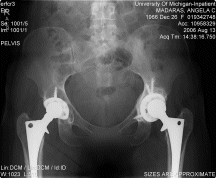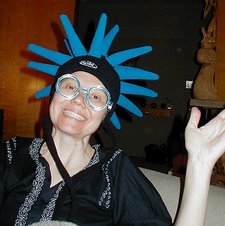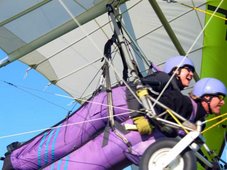As many of you know I have been on steroids for my entire adult life for lupus control. This has caused a condition called AVN or Avascular Necrosis. I have had four joints replaced, actually the bones which make up the joint, due to this destructive condition for which western medicine has no cure. The outlook is devastating for someone as independent as me. I am coming to terms with it more now due to increase pain and decrease mobility. It has spread to most of my large bones and some small. Think of swiss cheese. I say this because I want people to understand why one day I walk tall and the next I am with walker, cane or wheel chair. I am ordering a motorized chair soon so do not be shocked when you see me in it. I am trying to be positive and proactive doing all I can to make it ok mentally and emotionally while doing all I can physically and nutritionally as possible. After 20 years of dealing with it's progression I have to face the facts so I have listed them here for you to ponder. Please do not bombard me with all sort of alternative treatments I have studied and done everything under the sun. The fact I exercise, walk and live a fairly normal life is amazing enough. I will continue to be active but changes are expected and miracles always happen. See my bones strong and blood vessels bring blood to them.
Definition
Avascular necrosis is death of bone tissue due to a lack of blood supply. This can lead to tiny breaks in the bone and the bone's eventual collapse. Avascular necrosis most often affects the head of the thighbone (femur), causing hip pain. But it may affect other bones as well.
Blood supply to the bone can be impaired for a number of reasons, including injuries. Avascular necrosis is also associated with long-term use of steroid medications. Can be caused by lupus, other diseases and alcoholism. Your doctor might use other terms to describe avascular necrosis, such as osteonecrosis, aseptic necrosis or ischemic bone necrosis.
Avascular necrosis is progressive, meaning it worsens with time. Managing the condition is a lifelong process.
Symptoms
Avascular necrosis may cause no signs or symptoms. But some people experience pain or a loss of range of motion in the affected joint. Where you experience pain depends on where the avascular necrosis occurs. For instance:
* Avascular necrosis of the hip may cause pain in your groin. Pain may radiate down your thigh to your knee. Pain is usually worse when standing or walking.
* Avascular necrosis of the wrist may cause wrist pain and finger weakness. You might feel less pain when you keep your hand still. The wrist bones most commonly associated with avascular necrosis include the lunate (Kienbock disease) and the scaphoid (Preiser disease).
* Avascular necrosis of the knee causes knee pain. The bone most commonly affected is the lower end of the thighbone (femur).
* Avascular necrosis of the shoulder usually involves the head of your upper arm bone (humerus). Pain and stiffness are common.
Avascular necrosis may also develop in the bones of your foot, ankle, spine and jaw.
Tests and diagnosis
To determine what's causing your pain, your doctor will ask about your medical history and your current signs and symptoms. He or she will likely want to know what actions increase your pain and what relieves it.
In order to diagnose avascular necrosis, your doctor may request images be taken to get a closer look at your bones. Common tests for avascular necrosis include:
* X-rays. X-rays usually appear normal in people who have early-stage avascular necrosis. Later stages may be more evident on an X-ray.
* Magnetic resonance imaging (MRI). MRI scans can show early changes in the bone that may indicate avascular necrosis.
Depending on your signs and symptoms, your doctor may use other tests to diagnose avascular necrosis. In rare cases, your doctor may surgically remove a small piece of bone (biopsy) for laboratory examination.
Complications
Avascular necrosis that goes untreated will continue causing deterioration of the bone. Eventually the bone may become weakened enough that it collapses, causing pain and disability. Letting your avascular necrosis go untreated could lead to severe pain and loss of movement within two to five years.
Treatments and drugs
The goal of avascular necrosis treatment is to prevent further bone loss. What treatment you receive depends on the amount of bone damage you already have. Early stages of avascular necrosis may benefit from more conservative treatment, while later stages may require surgery.
Medications
Nonsteroidal anti-inflammatory drugs (NSAIDs) can relieve pain caused by avascular necrosis. Examples of NSAIDs include aspirin and ibuprofen.
Bisphosphonate medications, such as alendronate (Fosamax), also may play a role in the treatment of this disease. In some studies of people with avascular necrosis affecting the ball portion of the hip joint (femoral head), bisphosphonates appeared to slow the progression of the disease and reduce pain. More research is needed before doctors can make a strong recommendation about the use of bisphosphonates in the treatment of avascular necrosis.
Rest
Reducing the amount of weight and stress on your affected bone may slow the damage of avascular necrosis. You may need to restrict the amount of physical activity you engage in. In the case of hip or knee avascular necrosis, you may need to use crutches to keep weight off your joint for one to three months.
Exercises
Certain exercises may help you maintain or improve the range of motion in your joint. A physical therapist can choose exercises specifically for your condition and teach you how to do them.
Electrical stimulation
Electrical currents may encourage your body to grow new bone to replace the area damaged by avascular necrosis. Electrical stimulation can be used during surgery and applied directly to the damaged area. Or it can be administered through electrodes attached to your skin.
Surgery
Surgical procedures for people with avascular necrosis include:
* Core decompression. In this operation, your surgeon removes part of the inner layer of your bone. This relieves pressure within your bone, reducing your pain. The extra space allows your bone to form new blood vessels and stimulate the production of new bone. Core decompression works best in people with early-stage avascular necrosis.
* Bone reshaping (osteotomy). This procedure reshapes the bone to reduce the amount of stress placed on the area affected by avascular necrosis. Osteotomy is usually used in people with advanced avascular necrosis. Recovery may take up to a year.
* Bone transplant (graft). During this procedure, your surgeon takes healthy bone from another part of your body and implants it into the area affected by avascular necrosis. Sometimes this is done in conjunction with a core decompression. Recovery may take six to 12 months. More studies are needed to establish the effectives of this treatment for avascular necrosis.
* Joint replacement. If your diseased bone has already collapsed or other treatment options aren't helping, you may need joint replacement surgery (arthroplasty). Joint replacement surgery replaces your joint with an artificial one. It requires months of recovery, including time spent learning to use your new joint.
Because avascular necrosis is a progressive disease, your doctor may start with conservative treatments. As those measures, such as rest, become less effective, you may move to more aggressive treatments, such as surgery.
Friday, July 18, 2008
Thursday, July 17, 2008
Butterfly Walk August 10...press release
July 17, 2008 Media contact: Laura Drouillard
E-mail: ljdrou@umich.edu
Phone: 734-764-2220
Butterfly walk to raise funds for lupus research
Aug. 10 family event will benefit Amster Lupus Research Fund
1 of 2
Learn more:
Amster Lupus Butterfly Walk
July 17, 2008 Media contact: Laura Drouillard
E-mail: ljdrou@umich.edu
Phone: 734-764-2220
Butterfly walk to raise funds for lupus research
ANN ARBOR, MI — Just 11 years after her mother had died from complications related to lupus, Angela Madaras received a diagnosis of the same disease. She was only a senior in high school at the time. After being rushed to a North Carolina hospital for a life-threatening episode involving kidney failure, hepatitis, seizures, pneumonia and vasculitis that put her in a coma for a week, she decided to come to the University of Michigan Health System for treatment.
Twenty-three years after her initial diagnosis, Madaras now resides in Ann Arbor, where she participates in research studies at U-M’s Lupus Clinic. While she still experiences symptoms of lupus and the long-term effects of treatments, Madaras says that the care she has received from U-M has given her the strength to give back to others who have been affected by the disease; she has made it her personal mission to contribute to the search for a cure.
“It has been 50 years since the FDA [Food and Drug Administration] approved a new treatment specifically for lupus. By volunteering and participating in trials, research studies and advocating that Congress pass certain legislation, I see my experience as a way to change the future for others,” Madaras explains.
One way that Madaras feels she is making a difference is through her participation in the annual Amster Lupus Butterfly Walk. The event—which was created in 2002 by longtime friends Linda LeFevre, a lupus patient at U-M, and Renee McKay, who has a sister with lupus— donates all of its proceeds to the Amster Lupus Research Fund. The fund, started by Herbert and Carol Amster, financially supports clinical research for lupus. To date, this community event has raised more than $150,000.
Systemic lupus erythematosus (SLE) is a chronic autoimmune disease that can affect every major organ system— including the kidneys, heart, brain, musculoskeletal, lungs and skin— among males and females of all ages and ethnic origins. Because lupus is an autoimmune disorder, the immune system mistakenly attacks the body’s own tissue and organs. Today, lupus affects more than one million people in the United States— including more than 9,000 people in Michigan alone. The exact cause of lupus is not known, and a cure has not been found.
The two-mile Amster Lupus Butterfly Walk will be held on Sunday, Aug. 10 at Civic Center Park, on Hall Road in Woodhaven in Wayne County. Registration begins at 10 a.m., and the walk will start at 11:30 a.m., rain or shine. A pancake breakfast will be held during the registration time. Registration is $15 per person or $50 for a team of four members. Team Sponsorship and Corporate Sponsorship opportunities are available until Aug. 5.
For more information about lupus, event registration or how to donate, call (734) 671-2367 or (248) 582-2727, e-mail butterflies@wowway.com or visit www.amsterlupus.org.
To learn more about the Lupus Program at U-M, please visit:
http://www.med.umich.edu/lupus/index.htm
To make a contribution:
Please mail your contributions (checks payable to the University of Michigan with “Amster Lupus Butterfly Walk” in memo line) to:
National City Bank
Re: Routing #RJ2SC9
400 West Fourth Street
Royal Oak, MI 48067
rivacy Statement
E-mail: ljdrou@umich.edu
Phone: 734-764-2220
Butterfly walk to raise funds for lupus research
Aug. 10 family event will benefit Amster Lupus Research Fund
1 of 2
Learn more:
Amster Lupus Butterfly Walk
July 17, 2008 Media contact: Laura Drouillard
E-mail: ljdrou@umich.edu
Phone: 734-764-2220
Butterfly walk to raise funds for lupus research
ANN ARBOR, MI — Just 11 years after her mother had died from complications related to lupus, Angela Madaras received a diagnosis of the same disease. She was only a senior in high school at the time. After being rushed to a North Carolina hospital for a life-threatening episode involving kidney failure, hepatitis, seizures, pneumonia and vasculitis that put her in a coma for a week, she decided to come to the University of Michigan Health System for treatment.
Twenty-three years after her initial diagnosis, Madaras now resides in Ann Arbor, where she participates in research studies at U-M’s Lupus Clinic. While she still experiences symptoms of lupus and the long-term effects of treatments, Madaras says that the care she has received from U-M has given her the strength to give back to others who have been affected by the disease; she has made it her personal mission to contribute to the search for a cure.
“It has been 50 years since the FDA [Food and Drug Administration] approved a new treatment specifically for lupus. By volunteering and participating in trials, research studies and advocating that Congress pass certain legislation, I see my experience as a way to change the future for others,” Madaras explains.
One way that Madaras feels she is making a difference is through her participation in the annual Amster Lupus Butterfly Walk. The event—which was created in 2002 by longtime friends Linda LeFevre, a lupus patient at U-M, and Renee McKay, who has a sister with lupus— donates all of its proceeds to the Amster Lupus Research Fund. The fund, started by Herbert and Carol Amster, financially supports clinical research for lupus. To date, this community event has raised more than $150,000.
Systemic lupus erythematosus (SLE) is a chronic autoimmune disease that can affect every major organ system— including the kidneys, heart, brain, musculoskeletal, lungs and skin— among males and females of all ages and ethnic origins. Because lupus is an autoimmune disorder, the immune system mistakenly attacks the body’s own tissue and organs. Today, lupus affects more than one million people in the United States— including more than 9,000 people in Michigan alone. The exact cause of lupus is not known, and a cure has not been found.
The two-mile Amster Lupus Butterfly Walk will be held on Sunday, Aug. 10 at Civic Center Park, on Hall Road in Woodhaven in Wayne County. Registration begins at 10 a.m., and the walk will start at 11:30 a.m., rain or shine. A pancake breakfast will be held during the registration time. Registration is $15 per person or $50 for a team of four members. Team Sponsorship and Corporate Sponsorship opportunities are available until Aug. 5.
For more information about lupus, event registration or how to donate, call (734) 671-2367 or (248) 582-2727, e-mail butterflies@wowway.com or visit www.amsterlupus.org.
To learn more about the Lupus Program at U-M, please visit:
http://www.med.umich.edu/lupus/index.htm
To make a contribution:
Please mail your contributions (checks payable to the University of Michigan with “Amster Lupus Butterfly Walk” in memo line) to:
National City Bank
Re: Routing #RJ2SC9
400 West Fourth Street
Royal Oak, MI 48067
rivacy Statement
Subscribe to:
Comments (Atom)










